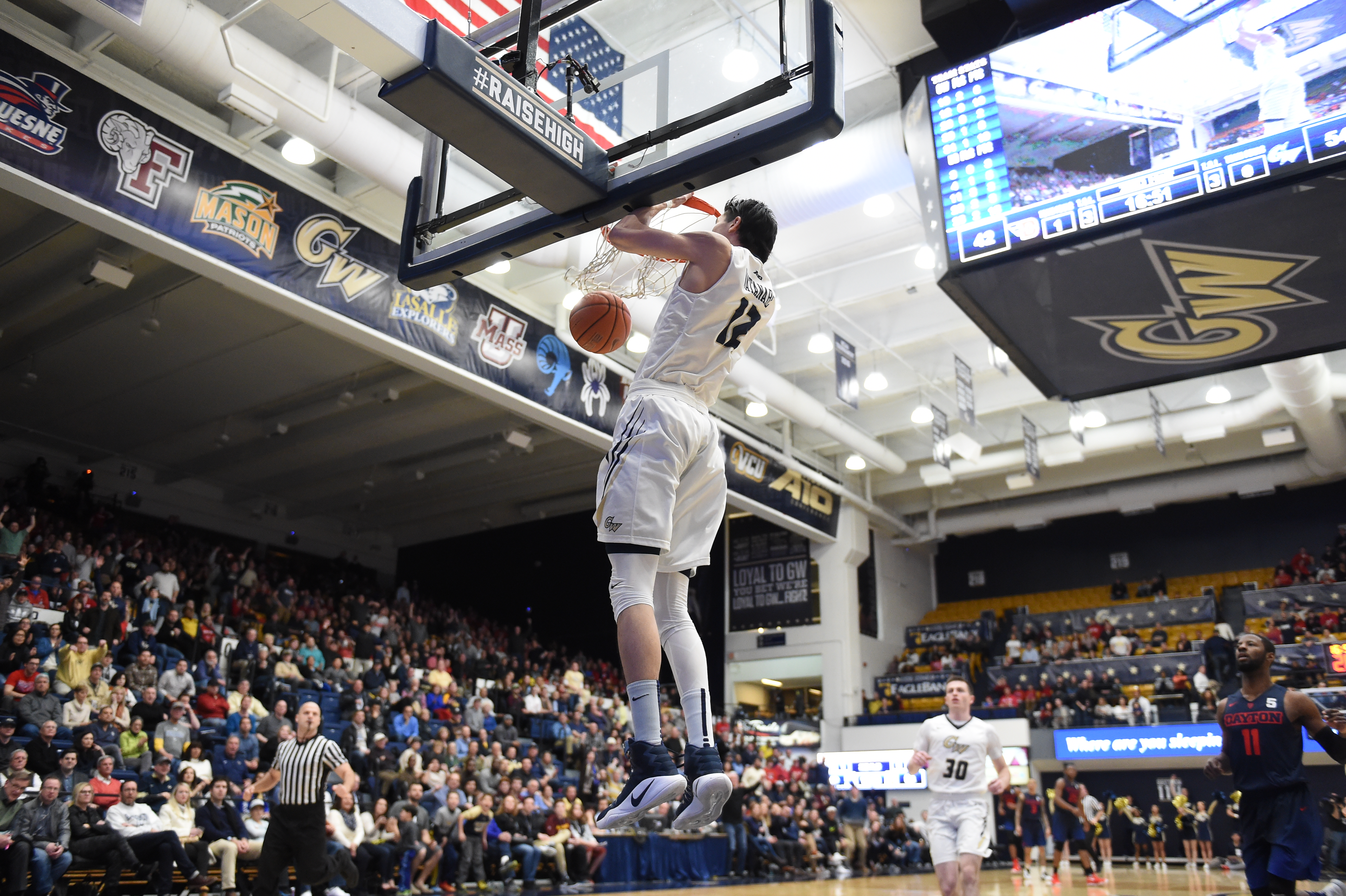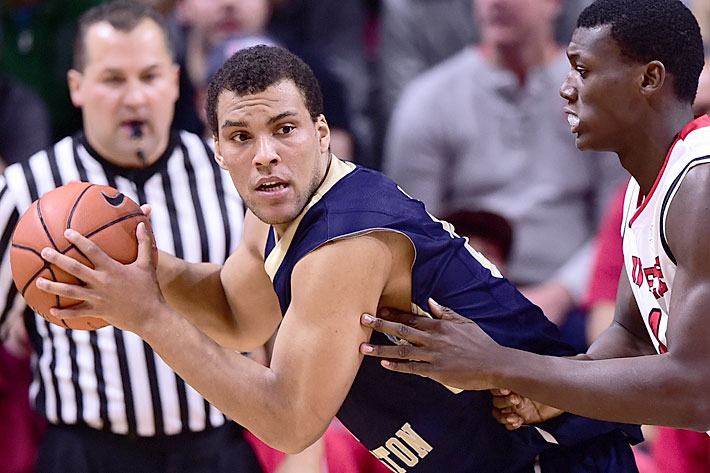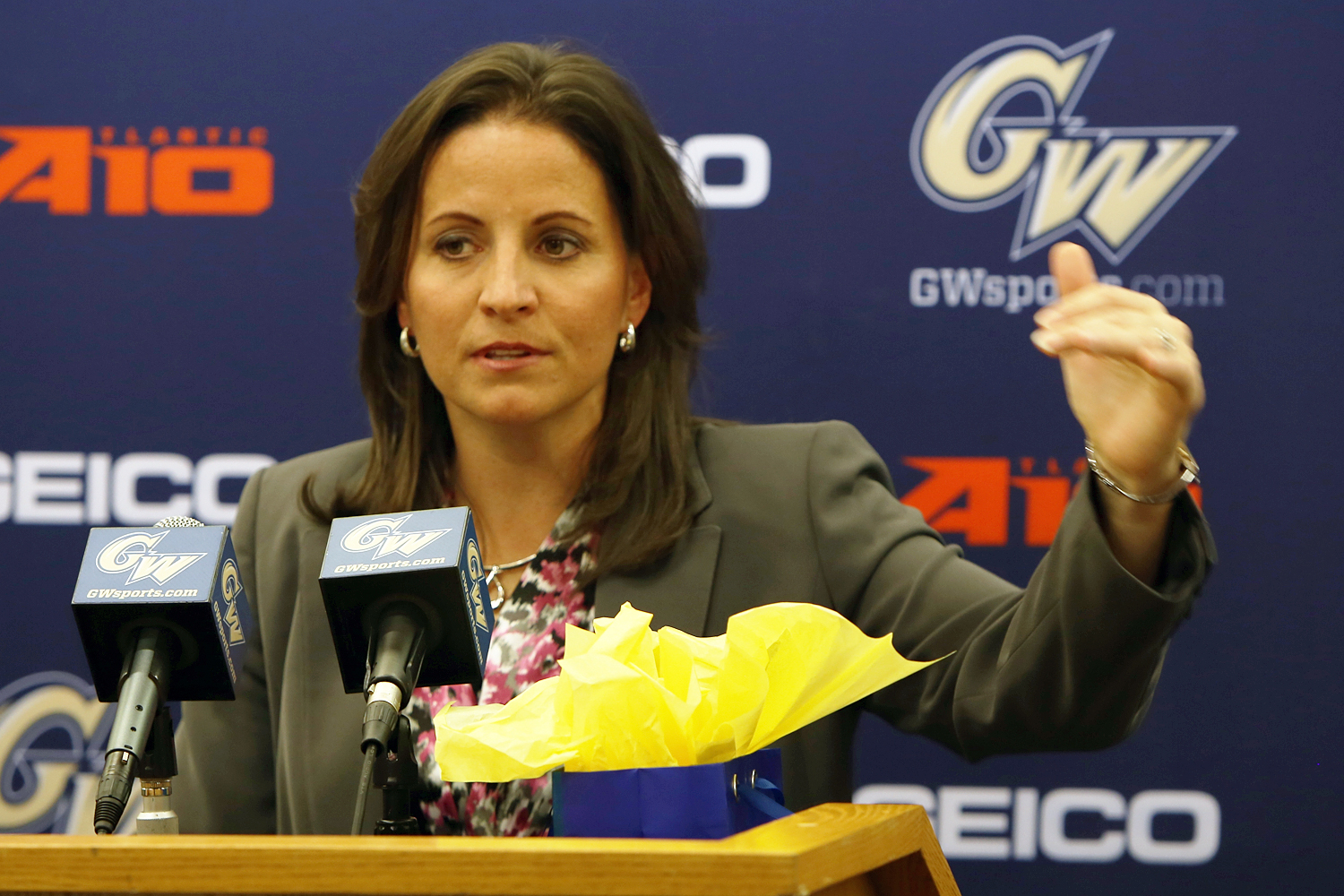At a time of nationwide controversy about the role of student-athletes and volatility in many Division I NCAA conferences, the Atlantic 10 has expanded its ranks, visibility and role as a national leader championing the ideal of the student-athlete, said George Washington President Steven Knapp, who finishes his term as chair of the A-10 Presidents Council on June 30.
Dr. Knapp, who was recognized earlier this month by the council and A-10 Commissioner Bernadette V. McGlade for his leadership and service, talked to George Washington Today about the conference’s growth and its support for student-athletes both on the field and in the classroom.
During his five-year tenure as chair, Dr. Knapp led the council’s biannual meetings of its 14 member school presidents and worked closely with Ms. McGlade to strengthen the conference, adding members and fostering a larger television and social media presence.
The conference welcomed Virginia Commonwealth University, George Mason University and Davidson College as new members over the past five years. “I think the addition of those schools greatly strengthened the A-10,” said Dr. Knapp. “It’s great to have one of our nearby neighbors now as a rival.” A “Revolutionary Rivalry” has developed between GW and George Mason University, located in Fairfax, Va.
The A-10 has also emerged as a robust advocate for the student-athlete. “We’ve become a national voice for the ideal of the student-athlete, and I give a lot of credit to the commissioner,” said Dr. Knapp. “The success is reflected in the academic strength as well as the athletic competitiveness of our students.”
The A-10’s Academic Progress Rate, a metric that assesses the eligibility and retention of student-athletes, was the second highest among NCAA conferences this year.
The conference has raised awareness of pressing social issues, for example, through its partnership with “It’s On Us,” a national campaign to prevent sexual assault on college campuses. Member schools, including GW, have created public service announcements that call campus communities to action to end sexual assault. Both Dr. Knapp and Ms. McGlade attended a 2014 White House announcement that launched the “It’s On Us” campaign.
Dr. Knapp, who was not a student-athlete himself in college, said through his service as chair he has gained a much fuller appreciation of the importance of college athletics.
“They strengthen the sense of community on campus, and for the student-athletes, it becomes a very important part of their education experience, helping them develop leadership, teamwork and communication skills,” he said.
Not only has Dr. Knapp worked to bolster the A-10 conference, but also under his tenure at GW, the university has invested significantly in athletic programs, facilities and infrastructure.
After three years of renovation, the Charles E. Smith Center, which houses the majority of GW’s 27 varsity sports, reopened in 2011. “I think it’s now one of the best arenas of its size in college athletics,” said Dr. Knapp. Soccer and lacrosse fields at the Mount Vernon Campus have also been replaced.
In 2011, the university named Patrick Nero as director of athletics and recreation. Mr. Nero previously served as commissioner of the America East conference. The next year, following an extensive review, university leaders and the Board of Trustees developed a strategic plan for the Department of Athletics and Recreation that expanded the university’s commitment to athletics and health and wellness initiatives.
And in 2014 the university dedicated Tucker Field, the university’s baseball field in Arlington, Virginia’s Barcroft Park, in honor of trustee Ave Tucker, B.B.A. ’77. The park underwent a multimillion-dollar renovation to install a new press box, concession area, dugouts, bullpens and stadium seating.
The investments have paid off. In the past six academic years, GW varsity teams have won 21 team championships in 12 different sports.
GW student-athletes, which number approximately 500, are also succeeding academically. This year, 353 student-athletes were honored as members of the athletic academic dean’s list, and 123 student-athletes were named to the Atlantic 10 commissioner’s honor roll.
The university’s student-athletes have also made time to give back to their community, embodying GW’s culture of service. For the second consecutive year, GW earned the national champion title in community service, winning the NCAA Team Works Helper Community Service Competition.
“That’s pretty extraordinary,” said Dr. Knapp.




